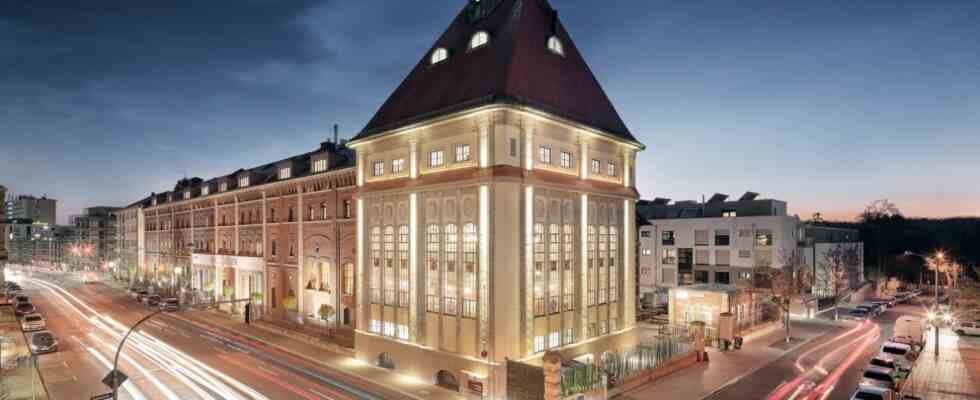It might just be the best time to take a look at Fürth. A Munich publishing house, manufacturer of playing cards, is causing amusement there because it put Fürth in a quartet with the allegedly “Ugliest cities in Germany“. Now there were times when people in Nuremberg’s neighboring town would not have just acknowledged this with a pitying smile. In the meantime, however, Fürth’s main problem is no longer the awkward mockery of humorists, to whom a travel guide from distant times may have come to the But the permanent influx of people who absolutely want to live in this spatially cramped city.Since the 1990s, Fürth has grown by more than 20,000 inhabitants to 130,000 today.
When asked about the foolish card game, Lord Mayor Thomas Jung tried to explain all of this with maximum gentleness. Yes, yes, he said, there really were times when the neighboring city of Nuremberg, for example, was envied for its many new buildings from the post-war period. Also in Fuerth in the city with the many old, listed buildingsit used to be like that.
In the meantime, however, word has gotten around that the old buildings in the historic industrial city of Fürth (significantly less affected in the Second World War than the neighboring city of the Nazi party rallies) have been extensively renovated. Including a lot of Gründerzeit architecture, a dream for people with taste – and of course some money. In comparison, Fürth still lives on the traditional reputation of the Franconian underdog, a reputation that in turn excuses the really funny mistake of the aforementioned playing card manufacturer from Upper Bavaria: That’s right, it was pretty dreary in Fürth. But it’s been a while.
Last but not least, Christian Höhn has made a name for himself with his series “Megacitys”.
(Photo: Christian Hertlein)
So visit in Fürth and there again in a property that symbolizes the history of this city. A new photo book by Christian Höhn, a photo artist who has made a lot of talk about himself with captivating pictures of global megacitiesincluding Beijing, Tokyo, Dubai, Shenzhen, Singapore, Shanghai.
The south of the city of Fürth along Schwabacher Straße once stood for garrison smell and lack of tidiness.
(Photo: Christian Höhn)
But now, in the volume “Die Malzboden” (ISBN 978-3-00-073920-0), Höhn has presented a long-term study of the large historic brewhouse in the south of Fürth, a quarter that once stood for garrison staleness and lack of tidiness – in a game of ugliness, with a little good will, could have played a bearable supporting role.
Uli Walter, who holds a doctorate in art history and worked in the building and art department of the Bavarian State Office for the Preservation of Monuments in Munich until 2022, calls this historic brewery in Fürth “an architectural sensation”. Not only does the brewhouse of the old “Humbserbräu” rise above the local roof landscape.
With its copper-green roof top and viewing platform, the “architectural sound” of this monument far outshines its surroundings and thus stands as a pars pro toto for an architectural sovereignty that in pre-industrial times was only reserved for the rulers in castles, churches or town halls. Only in the course of industrialization – to be seen archetypically not least in Fürth – were factory buildings allowed to compete with this sovereignty. They did. And how. According to Walter, the brewhouse became “the demonstrative flagship of a modern, efficient and hygienically perfect large brewery”.
Locksmith when raising the historic boiler.
(Photo: Christian Höhn)
However, not forever. Karin Jungkunz, the Fürth town clerk, recalls how the Humbser brewery was shut down in 2008 as the last and largest of the former five large breweries in the city. The space on Schwabacher Strasse had become too small, and the new brewery has been there since then, or even exactly on the city boundary between Nuremberg and Fürth.
Not everything that would have been worth protecting on the old brewery site in the south of the city of Fürth was also protected at the time. Today there are “City Villas” behind the brewhouse. However, the spirit of the Gründerzeit, represented above all by the characteristic Gründerzeit building, could be saved, fortunately. Lord Mayor Jung raves about the “world’s only Art Nouveau brewery”, which, when it was built in 1911, “was even more expensive than building the municipal theatre”. Which also tells a story about the importance of beer in Fürth.
The historic brewhouse is now home to a restaurant.
(Photo: Christian Höhn)
In 2014, a private investor took over the building and area, from then on called “Malzboden”. And now we have a café, a pharmacy, the Fuerther News, a coffee roastery, a yoga studio and a brewhouse restaurant have found a home. In the latter (“Humbser und Freund”) you can not only enjoy a fairly decent deer goulash high above Fürth, but also the photo documents of Christian Höhn hanging on several floors.
Lunch break in the dilapidated walls.
(Photo: Christian Höhn)
In black and white, he captured how dilapidated this building once was. And what has become of it. Can still be called ugly, of course. Then don’t be surprised if someone laughs.

